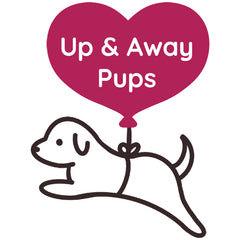Are Dachshunds Hypoallergenic? What Allergy Sufferers Should Know
Dachshunds aren't hypoallergenic, but people with mild allergies may still live comfortably with them especially wirehaired types. This guide explains coat types, common allergens, and practical steps like grooming, cleaning, and using HEPA filters to reduce symptoms. With the right care and allergy management, owning a Dachshund can still be possible for sensitive individuals.
If you’re someone who suffers from allergies, but really wants a Dachshund, this blog post is all you’re going to need. We’ll help you understand how people with allergies react around this breed.
However, even before we begin, we’ll clarify that Dachshunds are not considered hypoallergenic. They shed moderately and produce dander, which can trigger allergic responses in sensitive individuals. That doesn’t necessarily mean you can’t live with a Dachshund if you have mild allergies, but it does mean extra care and awareness are needed.
Understanding Dachshund Coats
So, understanding dog coat types is extremely necessary for all dog owners/to-be owners. Since Dachshunds are what we’re talking about today, let’s focus on their coats specifically here.
Dachshunds come in three coat types: smooth, wirehaired, and longhaired. Each type sheds differently and requires specific grooming routines.
• Smooth-coated Dachshunds: These dogs shed moderately all year but since they have a short and dense coat, it is quite easy to manage. Now, with that said, they still do release dander. Brushing once or twice a week can help reduce shedding and keep the coat healthy.
• Wirehaired Dachshunds: The least shedding type of Dachshund out there. Their coat has this tendency of trapping hair rather than letting it fall, which can make them slightly easier for allergy sufferers.
• Longhaired Dachshunds: With their long, flowing, silky coats, these pups shed the most, particularly during seasonal changes. If you don’t brush them regularly, tangles and matting will occur and frequent grooming sessions are needed to reduce dander in the home.
Even though wirehaired Dachshunds shed less, all three coat types produce dander. Dander is the primary allergen in dogs, and it can trigger reactions even in people who are careful about cleaning and hygiene.
Allergens in Dachshunds
You might assume it’s the fur that causes allergies, but that’s actually not the case. It is the saliva, skin flakes, and dander that trigger a reaction.
When a dog licks its fur, these proteins dry and become airborne, which can lead to sneezing, itchy eyes, runny noses, and other allergic symptoms. Dachshunds, like all dogs, produce these allergens, which means no Dachshund is completely “allergy-free.” No dog is, and don’t let anyone tell you otherwise.
However, things start to get complicated as people’s reactions vary widely. Some individuals with mild allergies may tolerate a wirehaired Dachshund with careful grooming and cleaning routines, but others may experience strong reactions regardless of coat type. Here, what really helps is actually knowing your own sensitive threshold.
Managing Allergies with Dachshunds
When someone has lactose intolerance, they find ways to consume dairy in a manageable way. Similarly, if you’re determined to own a Dachshund despite allergies, there are several practical steps you can take:
• Brush your dog as often as you can, literally. Every day? Great! Multiple times a week? Very good! This removes loose hair and dander. Dogs aren’t great fans of taking a bath, and neither should you bathe them every day, so stick with a once or twice a month routine (unless they get super dirty).
• Since fur carries dander, you need to regularly vacuum places that catch fur, such as carpets, bedding, hard surfaces, furniture, etc. Also, we recommend keeping certain rooms off-limits for the dog. Make your bedroom, for example, an allergy-free safe space for you to return to.
• Technology is here to make our lives easier, so make use of it to the fullest extent. A HEPA filter in areas where you spend the most time will trap airborne allergens and make things a lot more manageable for those who suffer from allergies. This is particularly helpful if your dog spends time indoors frequently.
• Speak with your vet and healthcare provider so they can tell you about allergy treatments such as antihistamines or nasal sprays. Some people find that combining medication with cleaning and grooming routines makes living with a dog much more manageable.
• A healthy diet for your Dachshund can improve skin and coat condition, which may reduce dander production. Regular vet visits help prevent skin issues that can increase allergens.
Conclusion
While Dachshunds are not hypoallergenic, some individuals with mild allergies may still live comfortably with them. Wirehaired Dachshunds are often the best option for people sensitive to pet allergens, but even they produce some dander. Spending time with a Dachshund before bringing one home is the most reliable way to gauge your reaction.
Pairing the right breed with consistent grooming, a clean home, and proper allergy management can make it possible to live with a Dachshund even if you are prone to allergies. It's about understanding your limits, preparing your home environment, and knowing how to care for both yourself and your dog. For many allergy sufferers, the companionship of a Dachshund is worth the extra effort required.
FAQs
Q1: Are Dachshunds Hypoallergenic?
No, Dachshunds are not hypoallergenic. They shed and produce dander, which can trigger allergic reactions in sensitive individuals.
Q2: Which Dachshund Coat Type is Best for Allergy Sufferers?
Wirehaired Dachshunds generally shed less and produce fewer allergens, making them a better choice for people with mild allergies. However, individual reactions vary, so it’s important to spend time with the dog first.
Q3: Can Regular Grooming Reduce Allergens?
Yes, regular grooming, including brushing and occasional bathing, can reduce loose hair and dander, helping to minimize allergens in your home.


